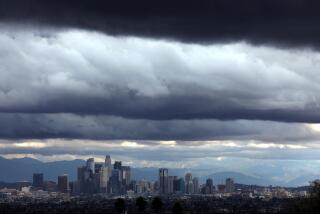Pollution burden higher for state’s Latinos and blacks, report finds
Latinos and African Americans make up a disproportionately high percentage of the population of California ZIP Codes most burdened by pollution, according to a report released Friday by state environmental officials.
Latinos account for nearly two-thirds of residents in the top 10% most polluted ZIP Codes despite making up only 38% of the state’s population, the analysis by the California Environmental Protection Agency shows.
Nearly 10% of residents of the most polluted ZIP Codes are black, though they make up only 6% of the population statewide, according to the report. Whites, in contrast, are more than 40% of the state’s population but only 16% of residents of the most polluted ZIP Codes.
The findings came as part of a statewide environmental health assessment released last year.
The online screening tool, called CalEnviroScreen, uses 2010 Census data and environmental, health and socioeconomic indicators to score and map ZIP Codes by their pollution burden and vulnerability to environmental hazards, including traffic pollution, hazardous sites, pesticide use and contaminated water. It shows the 10 worst-scoring ZIP Codes are in Los Angeles County and the San Joaquin Valley.
An outside expert said the analysis reaffirms what has been established by social scientists for more than 15 years: that nonwhite communities bear a disproportionate burden of environmental hazards that is not simply a function of lower incomes.
“No matter how you slice and dice it ... there’s a pretty standard finding that there are big race differentials,” said Manuel Pastor, director of the Program for Environmental and Regional Equity at USC. “The case is pretty well-made in California.”
The screening tool was created by state agencies to identify the communities most burdened by multiple pollution sources and target them with grants, cleanup projects and environmental enforcement.
The analysis of race and ethnicity first appeared as the final chapter of an update about the tool last fall. State environmental officials said they released the six-page section as a separate document Friday because the findings received little attention at the time.
Twitter: @tonybarboza







